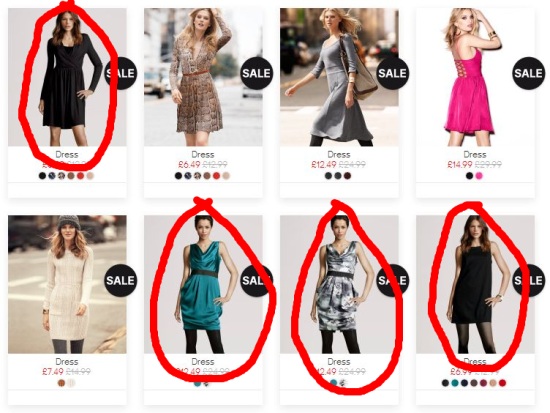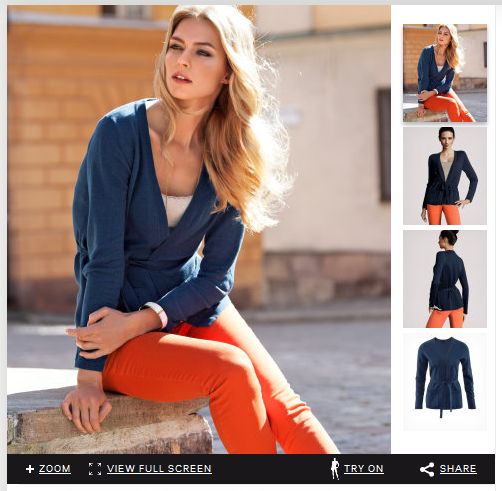The media appears to be making a big fuss about H&M “confessing” to using virtual models on their website. The people at Jezebel.com realised that H&M picture clothes on models that are put together by a computer. You can read the original story H&M Puts Real Model Heads On Fake Bodies [Jezebel] and see an example in the Telegraph H&M confess to using computer generated models. In the last 24 hours this story has appeared all over the place.
The story has provoked an angry response from a lot of people and many have pointed out problems. I agree that doing it this way can contribute towards defining a particular body image as the norm, and can create an unrealistic ideal in the minds of women and in what people expect of their partners. There is no range of body shapes and sizes, which can’t help people who are unhappy with their own size or shape. I could see this contributing to eating disorders and mental health problems too.
I think, though, that this is being sensationalised by the media and being blown out of proportion. Accusations that this is being done to keep costs down or to get perfect models or with some malicious intention are wrong here. One comment I saw says “Even the bodies of professional models are too imperfect to properly advertise clothing with. Even with photoshop. The only solution was to invent an entirely virtual body that no human being actually has.” This just isn’t true. Here is what is really happening: H&M use a virtual dressing room created by Looklet.com. The clothes are photographed on a mannequin and the human models are photographed. The whole lot is put on the website. Then the computer can take whichever clothes are desired and put them on a model to create an outfit to the customer’s own specification. The point is to allow customers to see what their outfit looks like, which encourages them to buy that item of clothing, and maybe to buy other clothes and accessories that they have tried on the virtual model. It is possible to tell which pictures used a virtual model since all of the models for the virtual dressing room are shown with the same pose, left hand on hip. The virtual models are highlighted in the picture below.


As I said, this is being sensationalised by the press. H&M never said that they didn’t use computer models, and they haven’t confessed to anything, just acknowledged the truth when people noticed. I am sure that many people had noticed on earlier occasions when they used the website to mix and match clothes. H&M aren’t the only ones to do this; other clothing brands such as the Swedish JC (Jeans & Clothes) also use Looklet. Strangely, so do Absolut Vodka.

There are steps that could be taken to make this better, not all of them practical. The clothes could be photographed in a range different sizes, but a single new size would double the work required to process the images and get them onto the website and in practice is not affordable. It could be made clearer that the virtual models are not real people, with a notice to that effect on the website, and perhaps H&M shouldn’t use the virtual models mixed in with their real ones. The virtual models could be made obviously less human; although making them look like a Barbie doll might be a bit too condescending.
In the end I don’t believe that this is anything like the scandal that people think it is. People have looked at the headlines with words like “confesses” in them and made assumptions but few have gone to the website and experimented with creating looks to see what the real reason for the virtual models is. The ability to create looks is useful and is enjoyed by many people as a creative outlet as well as being a marketing tool. Yes, it has its drawbacks, but perhaps they are worth working around to get the useful features too.
